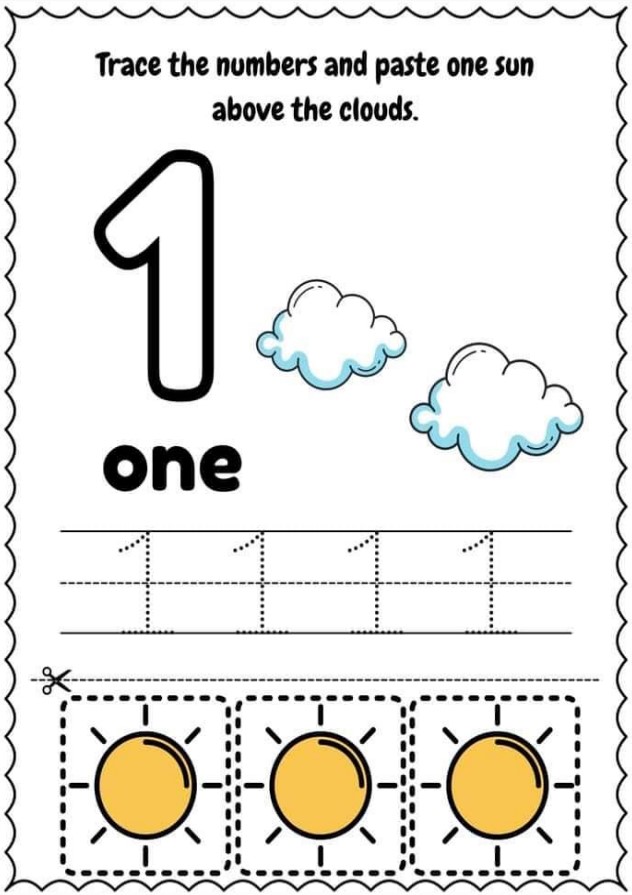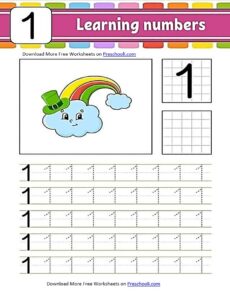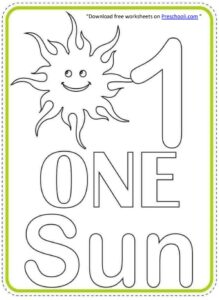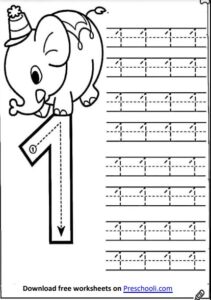The Essential Guide to Crafting Effective Math Worksheets for Pre-K
Early math skills are the foundation of a strong educational start for any child. And while the curriculum in preschool is based on experiential learning and play, structured math worksheets can provide an additional, valuable source for children to grasp early numerical concepts. In this extensive guide, we will walk through the process of creating math worksheets designed specifically for math worksheet for pre-K students, ensuring the activities are not only fun but also tailored to their developmental stage.
Understanding Pre-K Math Fundamentals
Before we can create effective worksheets, it is crucial to understand what math concepts are appropriate for pre-K students. At this age, children are just beginning to grasp basic numerical awareness and are typically working on foundational skills such as:
- Counting to 20 (or beyond)
- Recognizing and writing numerals
- Identifying shapes and colors
- Making comparisons (big/little, more/less)
- Understanding basic patterns
- Simple addition and subtraction through manipulatives (e.g., counting bears)
Building on these fundamentals in a way that is engaging and relatable is the key to a successful math worksheet for pre-K children.
Crafting Engaging and Age-Appropriate Content
The most effective math worksheets for pre-K students are those that are neither overwhelming nor simplistic. Designing activities that strike the right balance ensures that children are learning at an appropriate level while being fully engaged with the material.
Reflect on Learning Styles
Not all children learn in the same way, and at this stage, students are generally kinesthetic and visual learners. Thus, worksheets that incorporate a variety of learning styles including hands-on activities, visual prompts, and even some audio components such as songs can be incredibly effective.
Use Real-Life Contexts
Math in the real world often seems abstract to young learners. By placing math problems in contexts that are relatable to the child’s daily life, like using toys, snacks, or household items, the concept of math as a practical tool becomes more tangible and fun.
Keep it Playful
Pre-K children learn through play, and worksheets should feel like a playful activity rather than a chore. Annotate the worksheets with colorful illustrations, incorporate popular characters, and use language that is friendly and encouraging to maintain a light and enjoyable learning atmosphere.
Designing the Activities
Each activity on the worksheet should be thoughtfully crafted to effectively teach or reinforce specific concepts. The following are examples of activities tailored to the pre-K level that have been found to be particularly engaging and beneficial for young learners:
Counting and math worksheet for pre k
For counting activities, you might set up a fun array of objects for the child to count, encouraging them to fill in the corresponding numeral next to each set. Additionally, number recognition activities could involve asking the child to circle or color the correct number of items, enhancing their understanding of numbers and quantities.
Shapes and Colors
Simple shape and color matching activities are not only fun but also educational for children. These exercises can be engaging puzzles where kids match vibrant colors or piece together various shapes, fostering cognitive development and problem-solving skills in an interactive way.
Comparisons
Enhance your child’s grasp of comparisons by engaging them in activities that prompt them to discern which group of objects is ‘more’ or ‘less’, along with identifying what is considered ‘big’ or ‘small’. This practice can help develop their cognitive skills in a fun and interactive way.
Patterns
Teach patterns through consistent sequences, presenting a series where the child is prompted to fill in the next part of the sequence. This interactive approach encourages engagement and can progress to the child creating their own unique patterns, fostering creativity and critical thinking skills.
Basic Addition and Subtraction
Use manipulatives like counters, or provide visual representations, for hands-on activities that make addition and subtraction concepts clear and interactive.
Building Conflict-math worksheet for pre k
It is crucial to strike a balance where the worksheets are stimulating and interesting for the students, fostering a positive learning experience without causing unnecessary frustration or confusion.
Gradual Difficulty
The activities should progress in terms of complexity to ensure effective learning and engagement. Begin with straightforward, single-concept tasks that lay a solid foundation. As participants grasp the basics, gradually introduce more elements or steps, challenging them to think critically and problem-solve. This incremental approach fosters skill development and keeps participants motivated as they tackle increasingly sophisticated challenges.
Clear Instructions
Simple and clear instructions avoid confusion and frustration. For pre-K, it’s best to have a mix of verbal, visual, and demonstrative prompts to clarify the tasks.
Providing Solutions
Consider including a page key that demonstrates how to solve each problem. This not only helps children self-correct but also offers parents and educators insight into the child’s understanding.
Worksheet Distribution and Feedback Loop
The mere act of meticulously crafting a fantastic and engaging worksheet, filled with thought-provoking exercises and visually appealing elements, holds limited value if it remains untouched and unused.
Communication
Engage with parents and teachers in open communication channels to better grasp the reception of the worksheets. Encourage feedback from them and be proactive in making adjustments if specific activities are perceived as overly simplistic or excessively challenging. This collaborative approach ensures that the learning materials cater effectively to the diverse needs of students.
Variation
Keep a variety of worksheets on hand to cater to the curiosity and eagerness for new experiences that children at this age possess. By offering a range of activities encompassing various learning styles, you can enhance their engagement and enjoyment in the learning process.
Encouragement
Include some kind of progress-tracking element on the worksheets, like a designated space for affixing a sticker as a reward for completing tasks or a congratulatory line to acknowledge effort and provide motivation. This will not only instill a sense of accomplishment but also offer encouragement to keep up the good work.
Conclusion
Designing math worksheets for pre-K is both a science and an art, requiring a thoughtful approach that considers the child’s developmental stage, learning style, and the content’s alignment with educational standards. By creating activities that are engaging, age-appropriate, and fun, we can set children on a path to not just learning math, but loving it. After all, the foundation of a lifelong appreciation for mathematics is best laid with joy and enthusiasm, which is exactly what we aim to achieve with every pre-K math worksheet.
Join our Facebook Group



